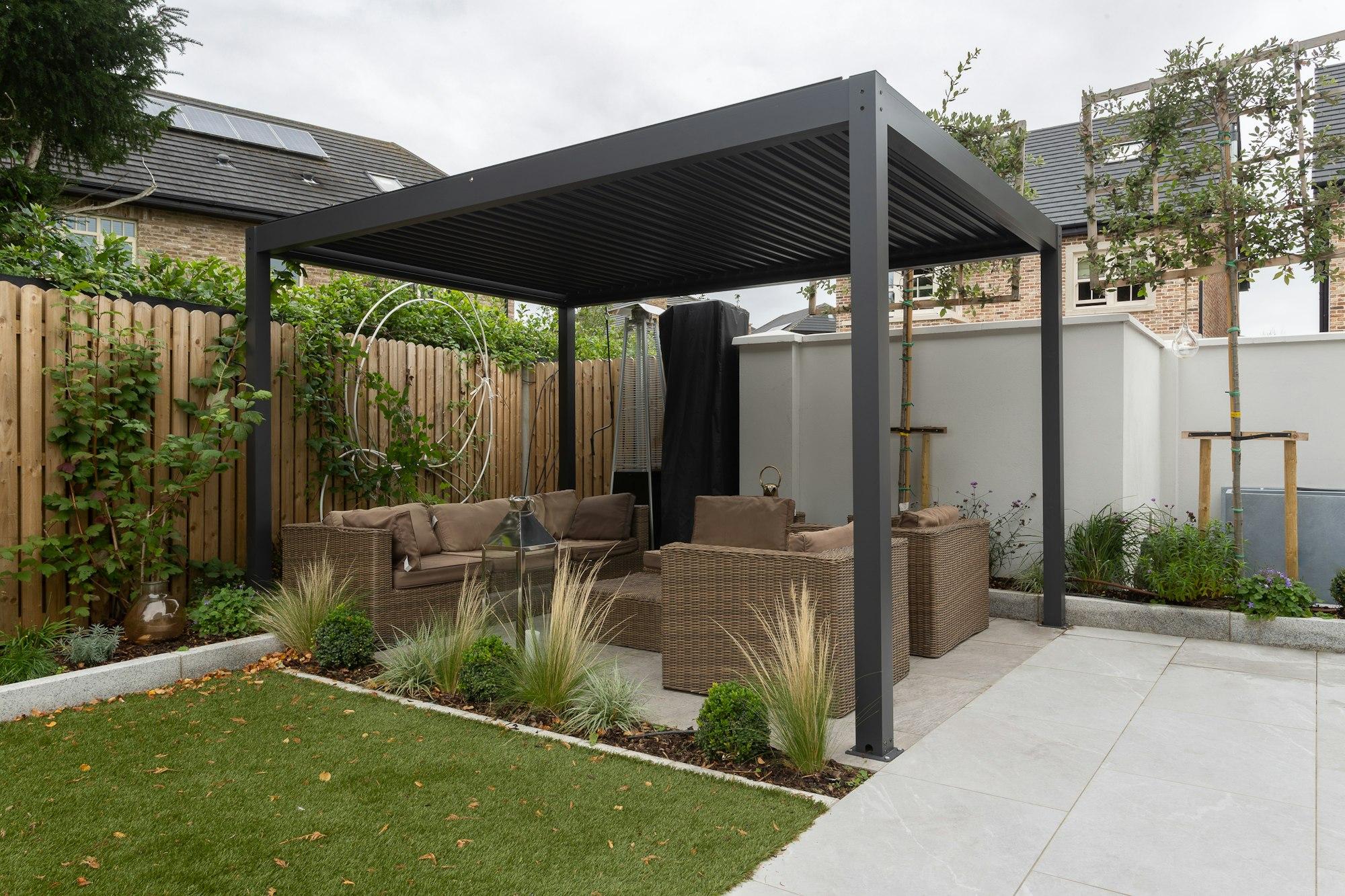What is a Pergola?
Pergolas transform ordinary backyards into airy retreats, blending ancient Egyptian wisdom with modern outdoor living. These architectural chameleons offer dappled shade and endless style, proving that sometimes the coolest rooms have no walls at all.

Photo by Tile Merchant Ireland
Picture the scene: Ancient Egypt, around 1400 BCE. The Pharaoh's garden architect is scratching his head, pondering how to create shade without blocking the divine rays of Ra entirely. His solution? A series of stone pillars supporting a latticed roof where vines could grow, providing dappled sunlight and a pleasant outdoor space. Little did he know, he had just invented the great-great-grandfather of the modern pergola.
Fast forward a few millennia, and the pergola has evolved from a pharaoh's fancy to a backyard staple. But what exactly is this structure that straddles the line between architecture and gardening, between indoors and outdoors?
A pergola is an outdoor structure consisting of columns that support a roofing grid of beams and rafters. It's like a gazebo's cooler, more open-minded cousin or a patio cover that decided to embrace its artistic side. While it may not provide full shelter from the elements, it does offer a defined outdoor space, partial shade, and a perfect support for climbing plants.

The Anatomy of a Pergola
To truly understand a pergola, let's break it down to its key components:
- Columns or Posts: These are the vertical supports that form the structure's foundation.
- Beams: Horizontal supports that span the top of the columns.
- Rafters: Smaller cross beams that create the latticed roof effect.
- Lattice or Slats: Optional additions to the sides for more privacy or plant support.
While pergolas share some similarities with arbors, they tend to be larger and more substantial structures, often creating an outdoor room rather than simply framing a garden entrance.

The Functionality and Versatility of Pergolas
Pergolas are the Swiss Army knives of outdoor structures. They can:
- Define an outdoor living space without fully enclosing it
- Provide partial shade and cooler temperatures
- Support climbing plants for a natural, green canopy
- Create an architectural focal point in your garden or yard
- Extend your living space by blending indoor and outdoor areas
Using Pergolas in Home Design
Pergolas can enhance various areas of your property:
- Patio: Add structure and shade to your outdoor living area.
- Garden: Create a centerpiece for your landscape design.
- Pool Area: Provide a shaded spot for post-swim relaxation.
- Walkways: Transform a simple path into a charming, covered walkway.
- Deck or Balcony: Add vertical interest and partial coverage to these spaces.
Unlike a porte-cochère, which is typically attached to a building and designed for vehicles to pass through, a pergola is usually a freestanding structure meant for pedestrian use and outdoor relaxation.

Making the Most of Pergolas in Different Spaces
Whether you have a sprawling backyard or a cozy urban patio, there's a pergola design for you:
- For large spaces, consider a freestanding pergola as a garden focal point.
- In smaller yards, attach a pergola to your house to extend your living space outdoors.
- For narrow spaces, design a pergola as an arched walkway.
- In urban settings, a rooftop pergola can create a garden oasis above the city streets.
Choosing the Right Pergola for Your Space
When selecting or designing a pergola, consider these factors:
- Size: Ensure it's proportional to your outdoor space and home.
- Material: Options include wood, vinyl, fiberglass, or metal. Each has its pros and cons in terms of durability, maintenance, and aesthetics.
- Style: From rustic wooden structures to sleek modern designs, choose a style that complements your home's architecture.
- Roof Design: Consider the amount of shade you want and whether you'll be growing plants on the structure.
- Local Regulations: Check local building codes and homeowner association rules before installation.

Care and Maintenance of Your Pergola
To keep your pergola looking its best:
- For wooden pergolas, stain or seal annually to protect against weather damage.
- Regularly inspect for any loose bolts or hardware and tighten as needed.
- Keep the structure clean by power washing once or twice a year.
- If you have climbing plants, prune them regularly to prevent overgrowth.
- In winter, remove heavy snow accumulation to prevent structural strain.
Final Thoughts
From its ancient origins to modern backyard designs, the pergola has stood the test of time as a versatile and attractive outdoor feature. It's a structure that embodies the best of both worlds – architectural interest and natural beauty. Whether you're looking to define an outdoor living space, create a garden focal point, or simply add a touch of Old World charm to your backyard, a pergola might be the perfect addition.
So why not take a cue from those ancient Egyptian garden designers and create your own partially shaded paradise? After all, if it's good enough for a pharaoh, it's probably good enough for your backyard barbecues. Just remember: while pergolas are great for growing vines, they're less suitable for pyramid building. Stick to what they do best – creating beautiful, inviting outdoor spaces.
Check out outdoor structures and furniture on Spoken and never overpay making your home beautiful!
Quick facts
What is the point of having a pergola?
A pergola provides partial shade, defines outdoor spaces, and supports climbing plants.
What is the difference between a pergola and a gazebo?
Pergolas have open, slatted roofs, while gazebos have fully covered roofs.
What is a pergola with a roof called?
A pergola with a solid roof is called a pavilion or covered pergola.
What is the point of a pergola without a roof?
It offers filtered shade, supports plants, and adds architectural interest.

Dane Hurtubise
Co-founder & CEO of Spoken
Dane Hurtubise is the Co-founder & CEO of Spoken. He has led two venture-backed companies and is a two-time Y Combinator alum. Prior to Spoken, Dane sold his previous company, Parklet, to Greenhouse Software where he served as VP of Platform and Partnerships. An avid runner, cyclist, and Pilates enthusiast, Dane holds a BS in Electrical and Computer Engineering from the University of Texas at Austin.
Read more